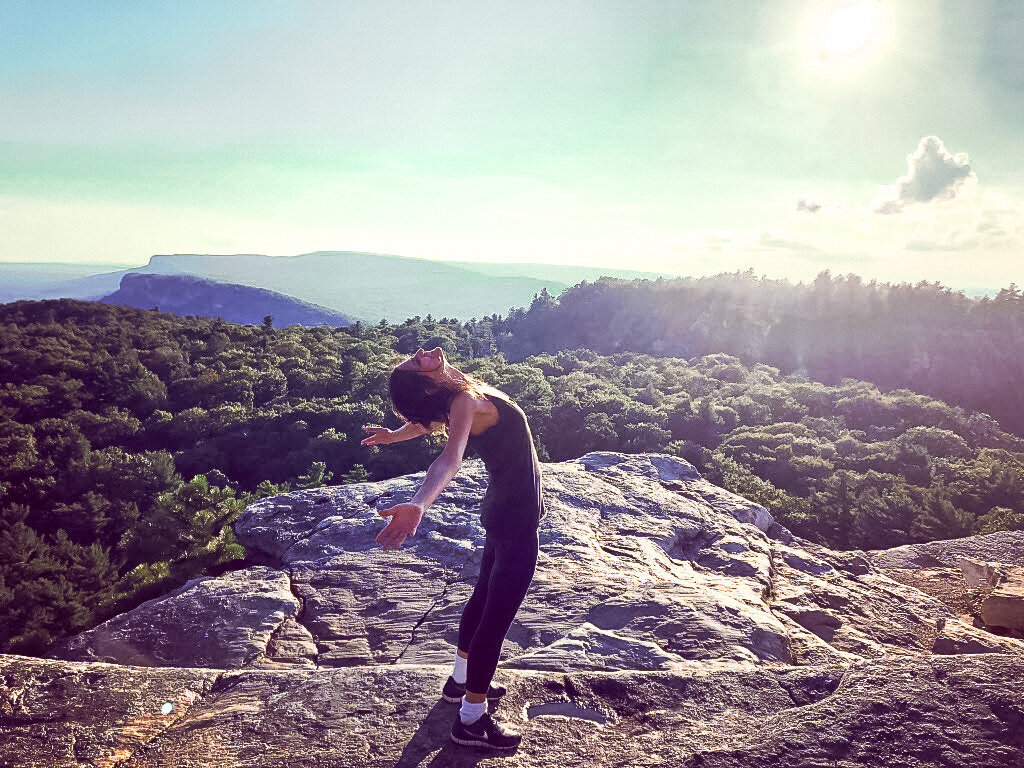two expansive listening meditation practices for spaciousness and clarity
“We pause so we can pay attention to ourselves, to others, and to the world around us in a more open and compassionate way.”
— Jillian Pransky, Deep Listening
Bring relief to our busy, bombarded, and preoccupied mind.
Listening meditation is simple, and anyone can do it anywhere. Essentially, we are training in being open and receptive. Eventually, listening meditation becomes an opportunity not only to cultivate a spacious attitude but also to be able to wait quietly for the unknown without expectations or fixed thinking.
Plus, we can enjoy additional healing benefits when we use nature as our subject. Tuning in to sounds in a natural environment can help enliven our own natural rhythms and rekindle our feelings of connection to the world around us.
While there are lots of reasons and benefits for using listening meditation, one reason I love it is that it’s fun! It’s easy, portable, and very calming. And you can involve your kids too! (Afterwards, you can talk about some of the things you heard, along with what it was like to notice them come and go.)
Try the Listening Meditation for Spaciousness and Clarity
Find a place to sit down in a natural surrounding, such as your yard, a beach, a park, on a rock by a pond. If you can't be outside, sit by an open window.
Choose a spot where you can sit comfortably and relaxed; it should be somewhere you feel safe, and where you won't have to get up for a few minutes. You can lay down if it's appropriate. You may choose to close your eyes or leave them open.
Begin with a few deep breaths into your belly. Use these big breaths to help you feel more sensation in your body, in the present moment.
Let your breath grow more natural and begin to trace its path with your awareness; follow it in and out of your body. Do this for about a minute.
Then slowly shift your awareness from your body and your breath to your immediate surroundings. Begin to notice the sounds around you. Let your ears open to anything in your immediate environment. Maybe it's birds or bees, flowing water, a plane in the sky, or a child laughing. Maybe it is a car zipping by, even a siren. Listen to the symphony of sounds rising and falling in and out of your range of hearing.
Relax as much as you can, and simply notice how sounds come and go. No one sound will stay the same for long. Even a jackhammer will eventually stop. Whenever your mind wanders, gently bring it back to the experience of nature.
As you do this listening meditation, feel free to let your attention go where it is naturally drawn. Try to listen without judging it or interpreting it, and resist the urge to follow a particular sound too long.
As you notice you are over-focusing on a particular sound, back up your awareness and see if you can take in the overall soundscape until your attention goes again to where it's naturally drawn.
Continue to do this over and over again: Shifting your attention from focusing in on what becomes interesting, and pulling back out to recognize there is always a bigger space behind the soundscape.
We are training in being open and receptive. Eventually, listening meditation becomes an opportunity not only to cultivate a spacious attitude but to also be able to wait quietly for the unknown without expectations or fixed thinking.
Before you close your practice, pause and contemplate how all sound rises and falls in and out of space. In the same way, clouds and weather patterns flow in and out of the space of the sky, sounds flow through one continuous space.
This basic listening meditation is a foundational building block to cultivating the spaciousness and the skill of compassionate listening which is the very heart of my book, Deep Listening.
deep listening meditation: creating space
we are learning to soften and make space
for everything to rise and fall
we are practicing allowing ourselves to expand
—Jillian Pransky, Deep Listening
Releasing tension is the act of consciously making space for whatever it is we're holding. Making space is not complicated, but it's not something most of us are used to. In fact, we're used to doing the opposite, contracting and protecting. So, making space is a skill we must practice.
There are a few essential components to releasing tension:
We need to feel safe and grounded.
We need to be present enough to notice where our tension is.
We need to allow what arises and not add on.
And we need to do all of this in such a gentle, kind, friendly way that our body and mind feel like it's all okay.
Releasing tension starts like this: "Hmmm, there's that tightness in my right shoulder. Look at that, here it is again." Whatever shows up, we simply notice it, then send it a little more space with our breath.
Enjoy this 20-minute Deep Listening meditation to create more space and ease in your life. Free live meditations will resume in September, sign up now to receive updates, inspiration, and weekly free practices in my Sunday Centering newsletter.



